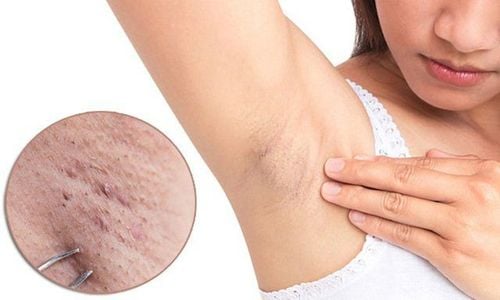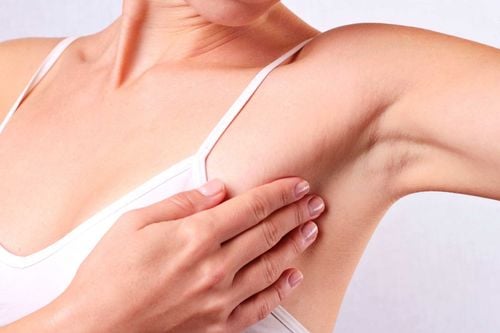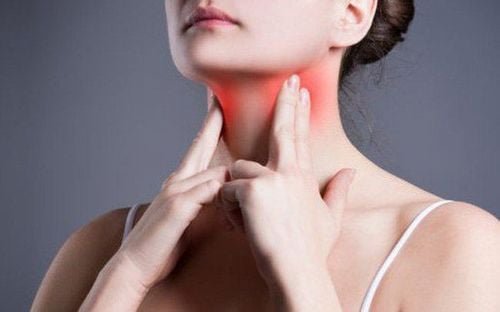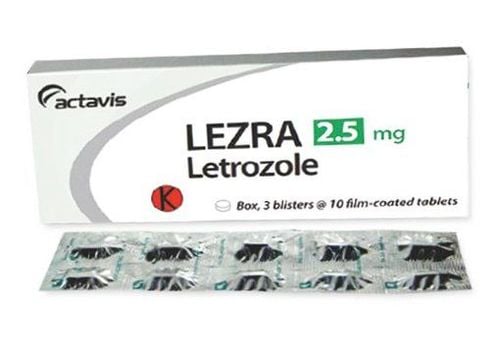Lymph nodes are part of the body's immune system, acting as filters that remove potentially harmful substances from the body. Swollen lymph nodes in the armpit can be a sign of infection or injury. In particular, swollen lymph nodes after plucking armpit hair is a risk factor for local infection. One should not dismiss and overlook other causes of swollen lymph nodes.
1. What are swollen lymph nodes?
When a person has an infection or injury, the lymph nodes can swell due to increased activity in filtering unwanted cells and potential pathogens out of the lymphatic fluid.
Lymph is a fluid that carries oxygen to cells and transports waste products away from them. This circulatory system also contains white blood cells, which help fight infection.
When the lymph nodes start working harder to remove waste, they can enlarge. Sometimes, a swollen lymph node can become obviously enlarged, painful, and tender to the touch.
Swollen lymph nodes can occur anywhere in the body, but are more common in certain areas, including the neck, armpits, and groin. In particular, swollen lymph nodes in the armpit are often related to local abnormalities or those in the head, face, neck, and surrounding chest area.
Hạch bạch huyết có vai trò quan trọng trong hệ miễn dịch của cơ thể. Bài trắc nghiệm dưới đây giúp bạn hiểu phần nào vai trò và chức năng của hạch bạch huyết.
Bài dịch từ: webmd.com
2. What are the causes of swollen lymph nodes?
2.1. Viral Infection
Many viruses can cause swollen lymph nodes, such as chickenpox, measles, mumps, rubella, and HIV. In addition to swollen lymph nodes, these viruses often produce other obvious symptoms, such as rashes.
However, other viral infections can cause significant swelling of the lymph nodes without any other obvious symptoms, including agents such as Flu and infectious mononucleosis.
2.2. Bacterial Infection
Bacterial infections can also cause the lymph nodes to swell. Some examples of infections that can affect the lymph nodes in the armpit include:
• Cellulitis
Cellulitis is a localized skin infection that occurs when bacteria enter the skin and infect the dermis, possibly due to trauma leading to an abrasion. Therefore, regarding the question "Is plucking armpit hair harmful?", "What are the harms of plucking armpit hair?", interventions on the armpit skin such as plucking, waxing, or cosmetic procedures are common causes of skin damage. Therefore, if hygiene measures, clean tools, and hand washing before the procedure are not followed, swollen lymph nodes after plucking armpit hair are likely to occur.
When cellulitis occurs, it can cause the nearby lymph nodes to swell. At the same time, other symptoms of cellulitis may also be present, such as pain, swelling at the injection site, skin ulcers, fever, chills, body aches, muscle and joint pain, loss of appetite, nausea, vomiting, and fatigue.
Treatment for cellulitis mainly involves the use of antibiotics. Patients may need to be hospitalized if the infection is severe or requires intravenous antibiotics. However, if you have experienced swollen lymph nodes after plucking armpit hair, it is important that you switch to methods that are less damaging to the skin.
• Lyme disease
Lyme disease is spread through the saliva of certain species of ticks, which are small insects that can bite humans. One of the early symptoms of Lyme disease is swollen lymph nodes, which can appear 3–30 days after a bite.
Other early symptoms include a circular, bullseye-shaped rash at the site of the bite, fever, chills, joint or muscle pain, fatigue, and headache.
To treat Lyme disease, doctors usually prescribe antibiotics. Anyone who suspects they have this condition should see a doctor immediately.

2.3. Other Causes
Bacteria and viruses are not always the cause of swollen lymph nodes in the armpit. Other causes can include rheumatoid arthritis or cancer.
While it is rare for swollen lymph nodes to be a symptom of cancer. However, this is the cause of very serious lymph node swelling. Cancer that originates in the lymphatic system is often suspected to be lymphoma. There are several types of lymphoma, including Hodgkin lymphoma, non-Hodgkin lymphoma, non-Hodgkin lymphoma in children, Waldenström macroglobulinemia, and skin lymphoma. In addition to swollen lymph nodes, symptoms of lymphoma can also include rapid weight loss, persistent fatigue, fever, and night sweats.
Furthermore, leukemia can also cause swollen lymph nodes, as can other cancers that have metastasized to the lymph nodes, such as breast cancer, which typically causes swollen lymph nodes in the armpit.
3. How is Swollen Lymph Nodes After Plucking Armpit Hair Diagnosed?
After a patient presents with swollen lymph nodes after plucking armpit hair, the doctor will determine the exact cause of the swelling to provide the best treatment. Diagnosis begins with asking about the patient's symptoms, reviewing their medical history, and then performing a general examination as well as a local examination.
Based on the clinical signs, the doctor will order diagnostic tests, such as blood tests or local or whole-body imaging, to make a definitive diagnosis and determine the appropriate treatment.
4. How to Care for Swollen Armpit Lymph Nodes at Home
Swollen lymph nodes can be painful. While some causes of swollen lymph nodes require specialized medical treatment, there are some causes that can be managed at home to alleviate the pain and will then resolve on their own.
Accordingly, the patient can apply a warm compress to relieve pain by soaking a towel in warm water, wringing it out, and placing it over the swollen lymph nodes.
Alternatively, patients can use over-the-counter pain relievers, such as acetaminophen or ibuprofen, to quickly relieve pain. However, if the above measures do not improve the condition, patients should consult a doctor to determine the exact cause.
In summary, swollen lymph nodes after plucking armpit hair have the potential to indicate a local infection. Therefore, it is advisable to choose safe and hygienic hair removal methods and to screen for other possible causes of swollen lymph nodes in order to promptly intervene with treatment and improve the long-term prognosis.
To arrange an appointment, please call HOTLINE or make your reservation directly HERE. You may also download the MyVinmec app to schedule appointments faster and manage your reservations more conveniently.
To arrange an appointment, please call HOTLINE or make your reservation directly HERE. You may also download the MyVinmec app to schedule appointments faster and manage your reservations more conveniently.








